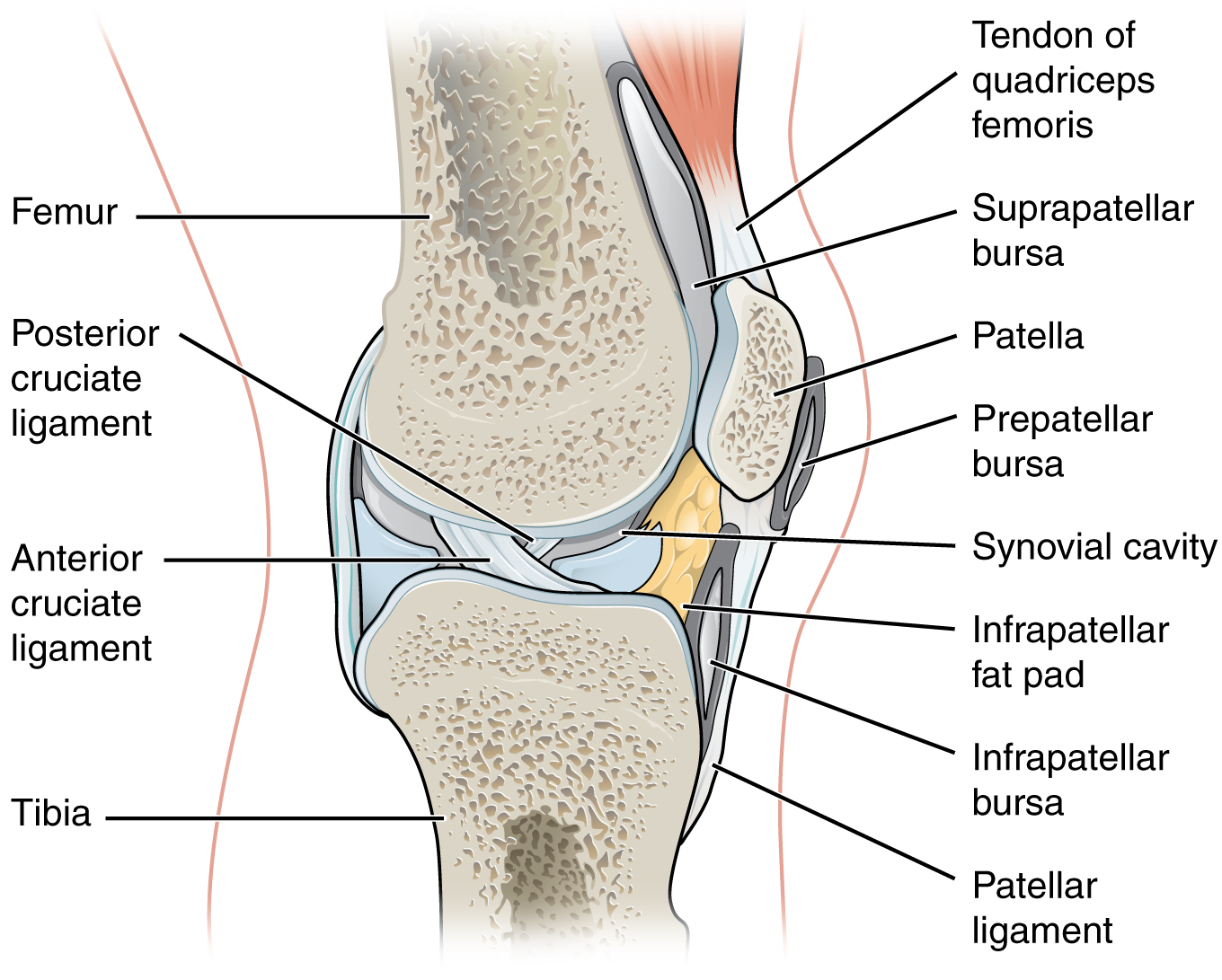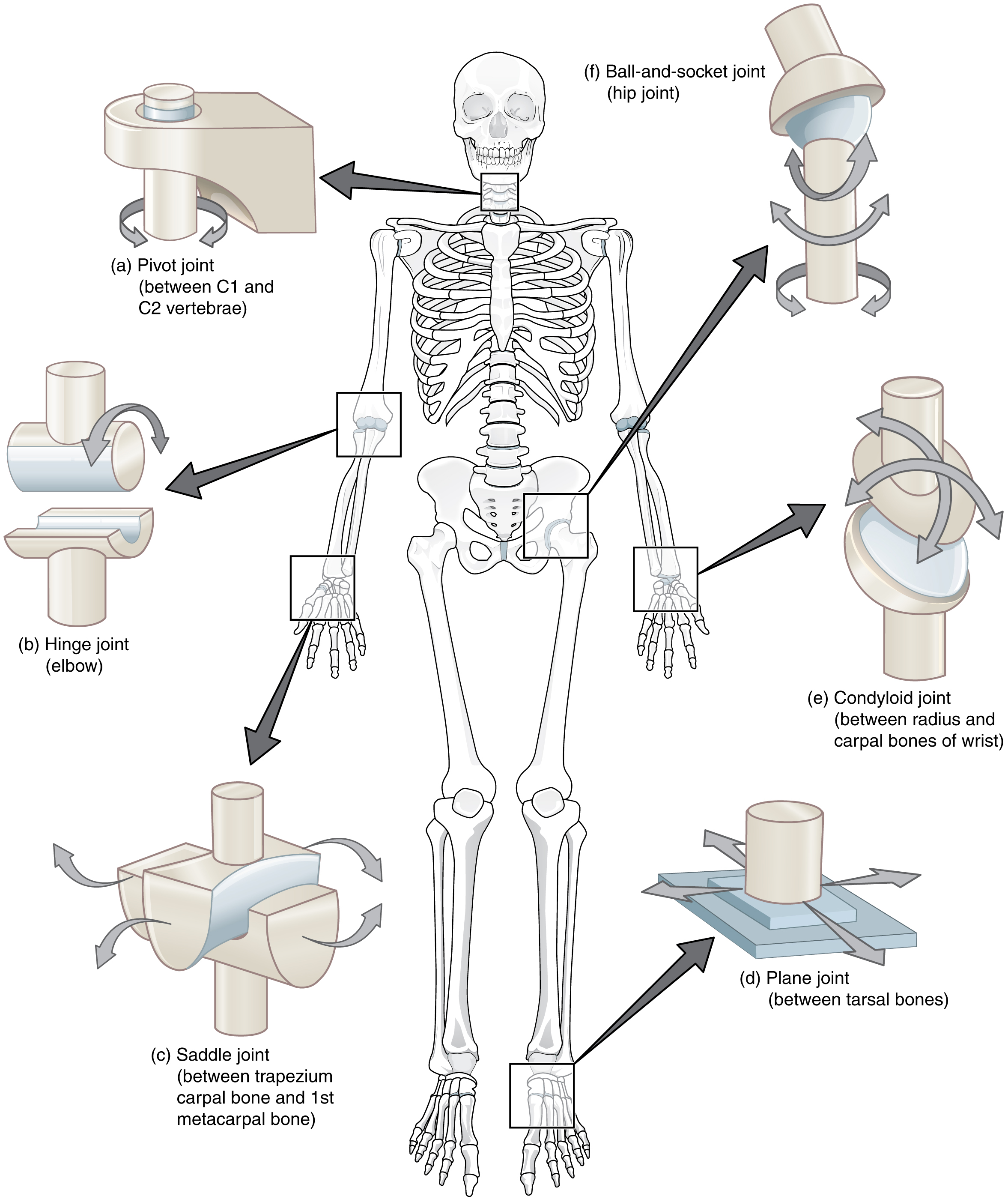| << Chapter < Page | Chapter >> Page > |
Additional structures located outside of a synovial joint serve to prevent friction between the bones of the joint and the overlying muscle tendons or skin. A bursa (plural = bursae) is a thin connective tissue sac filled with lubricating liquid. They are located in regions where skin, ligaments, muscles, or muscle tendons can rub against each other, usually near a body joint ( [link] ). Bursae reduce friction by separating the adjacent structures, preventing them from rubbing directly against each other.

Synovial joints are subdivided based on the shapes of the articulating surfaces of the bones that form each joint. The six types of synovial joints are pivot, hinge, condyloid, saddle, plane, and ball-and socket-joints ( [link] ).

At a pivot joint , a rounded portion of a bone is enclosed within a ring formed partially by another bone and partially by a ligament. The bone rotates within this ring. The rotation is around a single axis, such as the joint formed by the atlas and axis of the vertebral column.
In a hinge joint , end of one bone articulates with end of the adjoining bone . This type of joint allows only for bending and straightening motions along a single axis. A good example is the elbow joint, with the articulation between humerus and the the ulna. Other hinge joints of the body include the knee, ankle, and interphalangeal joints between the phalanx bones of the fingers and toes.
At a condyloid joint or ellipsoid joint , the shallow depression at the end of one bone articulates with a rounded structure from an adjacent bone or bones The knuckle joints of the hand are found at the base of the fingers. Another example is the radiocarpal joint of the wrist.
At a saddle joint , both of the articulating surfaces for the bones have a saddle shape as found in the base of the thumb. This allows the two bones to fit together like a rider sitting on a saddle. This joint provides the thumb the ability to move away from the palm of the hand along two planes. Thus, the thumb can move within the same plane as the palm of the hand, or it can jut out anteriorly, perpendicular to the palm.
At a plane joint (gliding joint), the articulating surfaces of the bones are flat or slightly curved and of approximately the same size, which allows the bones to slide against each other. The motion at this type of joint is usually small and tightly constrained by surrounding ligaments. Based only on their shape, some plane joints can allow multiple movements, including rotation. Plane joints are found between the carpal bones of the wrist or tarsal bones of the foot.
The joint with the greatest range of motion is the ball-and-socket joint . At these joints, the rounded head of one bone (the ball) fits into the concave articulation (the socket) of the adjacent bone. The hip joint and the shoulder joint are the only ball-and-socket joints of the body. At the hip joint, the head of the femur articulates with the acetabulum of the hip bone, and at the shoulder joint, the head of the humerus articulates with the scapula.
Ball-and-socket joints are classified functionally as multiaxial joints. The femur and the humerus are able to move in both anterior-posterior and medial-lateral directions and they can also rotate around their long axis. The shallow socket formed by the scapula allows the shoulder joint an extensive range of motion. In contrast, the deep socket of the acetabulum and the strong supporting ligaments of the hip joint serve to constrain movements of the femur, reflecting the need for stability and weight-bearing ability at the hip.

Notification Switch
Would you like to follow the 'Skeletal system' conversation and receive update notifications?